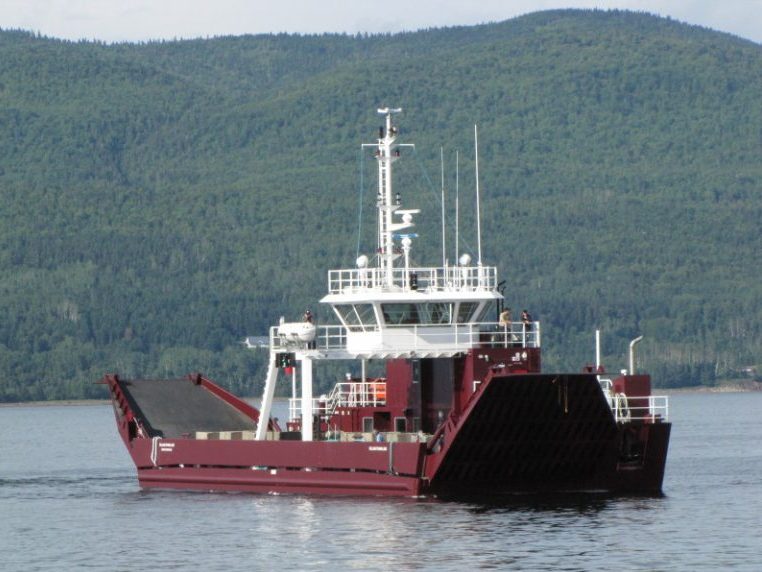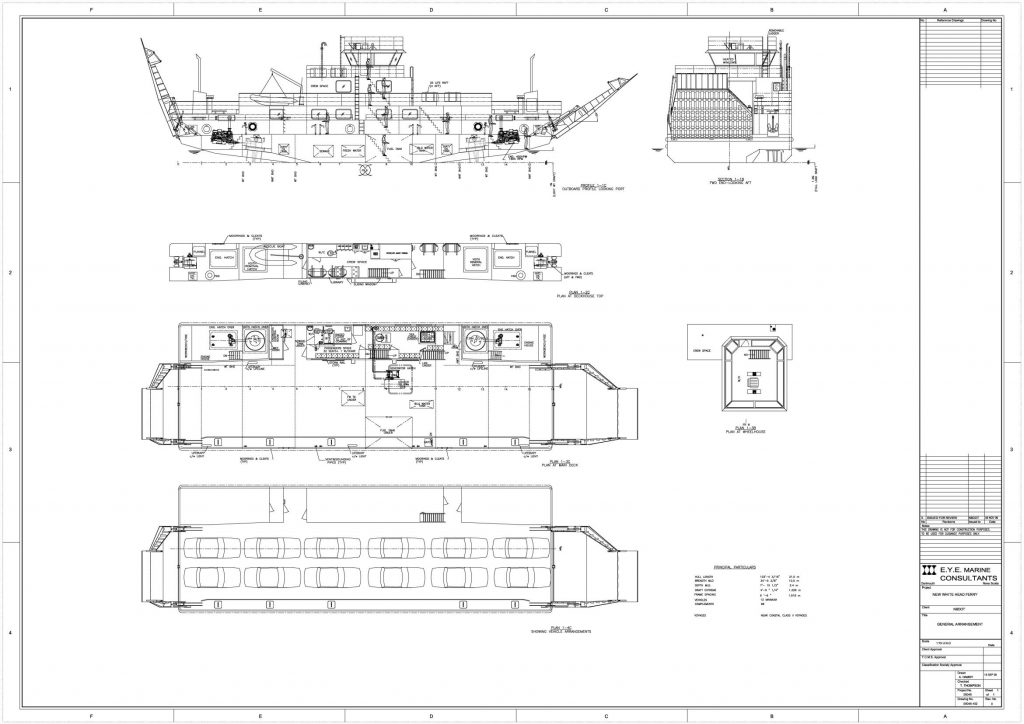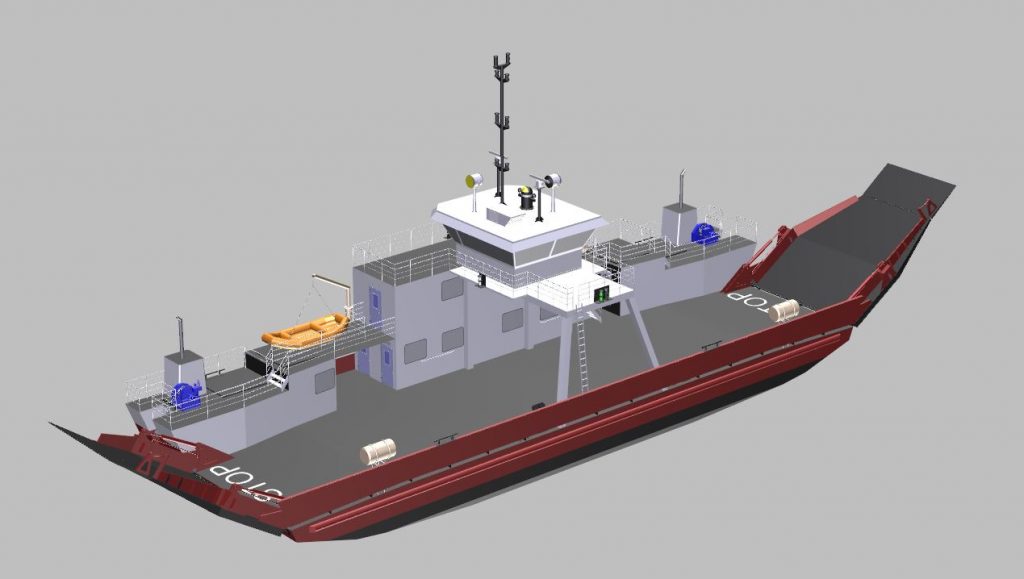
The William Frankland Ferry provides service between Grand Manan Island and White Head Island in New Brunswick. The run is a 25 minute open ocean transit that leaves from Ingalls Head, Grand Manan. The ferry is a double ended passenger and car self-propelled ferry.
The ferry was designed by E.Y.E. for the New Brunswick Department of Transportation and Infrastructure (NBDTI) in 2008. The ferry was built by Chantier Navier Forillon Inc in Quebec, completed in 2011 with EYE providing the onsite representation and technical advisor services for NBDTI. The ferry entered service in 2011 with Coastal Transport and was registered with Transport Canada at that time.
Particulars
| LOA: | 33.13 metres |
| Beam: | 10.5 metres |
| Depth: | 2.4 metres |
| GRT: | 245 tonnes |
| Vessel Type: | Passenger/Car Ferry |
| Complement: | 94 passengers 5 crew 12 Cars |
| Classification: | Near Coastal Class II |
| Main Engines: | 2 x CAT C12 – 385 HP @ 1800RPM |
| Propulsion: | 2 Voith drives Model# 12R4 EC/75-1 |
| Speed: | 9 knots |
| Fuel Capacity: | 12 730 litres |
| Water Capacity: | 4 550 litres |
| Owner: | NBDTI |
| Operator: | Coastal |
| Shipyard: | Chantier Navier Forillon Inc. |
Machinery and Auxiliary Systems
The ferry is laid out with an engine room at each of the vessel and an auxiliary machinery space below main deck in the center. The ferry is fitted with two Voith propeller drives which are driven through a cardan shaft coupled to a Caterpillar C12 marine engine.
The auxiliary machinery space houses two Caterpillar generating sets (1 x 28kW and 1 x 55kW). These two generating sets along with the main engines are cooled using box coolers installed in a seabay in the space. The main switchboard and bilge manifold are also located in the auxiliary space.
The ferry uses a 90kW heat exchanger to remove some of the heat created by the main engines and circulates it through a piping system just below the main deck to aid the crew in the Winter months with snow and ice removal.
Outfitting
The ferry is outfitted with all the required fire fighting equipment, lifesaving appliances and navigational aids as required by Transport Canada and in accordance with the Canadian Shipping Act.
The wheelhouse is fitted with a duplicate set of all navigation equipment and the ability for the captain to drive the vessel in either direction due to the double ended aspect of the ferry.
Construction
The ferry scantlings were designed in accordance with the ABS Rules for Building and Classing Steel Barges.
The ferry is of welded steel construction from the keel to the gantry and the wheelhouse is fabricated with aluminum. The bond between the aluminum wheelhouse and steel gantry is done using detacouple strip.
Both ends of the ferry in the raked/landing section of the hull have extensive increase in structure to allow the ferry to be pushed against the concrete ramps while loading and unloading of cars.


